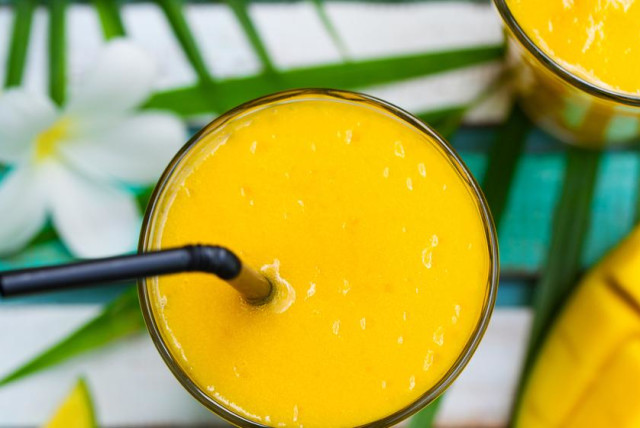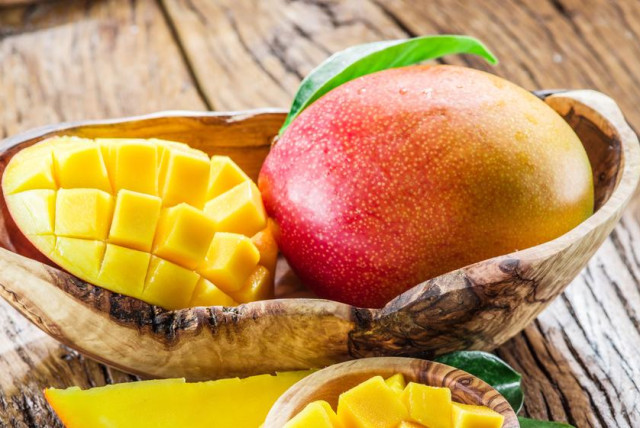Mastering the mango: Tips for picking the perfect fruit every time

Mangoes are an excellent source of vitamins and minerals, and they are hugely popular worldwide. But how can you make sure you're selecting the perfect one each time?
The mango is a highly flavorful and nutritious fruit that enjoys widespread popularity worldwide. Its delicious taste is matched by its numerous health benefits, making it a prized tropical fruit.
In light of the recent celebration of International Mango Day, we sought insights from Avi Payne, a respected authority in this field, to unveil the intricacies surrounding this captivating fruit. It's time to uncover the facts about mangoes and master the skill of selecting the perfect specimen.
Beyond its irresistible taste, mangoes are a rich source of essential vitamins and minerals that contribute significantly to our well-being. Packed with vitamin C, mangoes strengthen our immune system, keeping common diseases at bay. Additionally, they contain vital vitamin A, essential for both health and visual function, and vitamin E, a potent antioxidant that supports skin health.
Moreover, mangoes provide a healthy dose of dietary fiber, aiding digestion and promoting gut health. With potassium and magnesium, these tropical delights also contribute to maintaining a healthy heart and regulating blood pressure. Including mangoes in your diet isn't just a treat for your taste buds; it's a delicious way to support overall health.
But how do you pick the best one? Here's your guide:
1. Color check:
The color of a mango can hint at its ripeness. You should opt for mangoes with vibrant shades suited to their variety—whether it's sunny yellow, fiery orange, blush red, or royal purple. However, remember that some mangoes stay green even when fully ripe, so familiarize yourself with the mango varieties available in your region.
2. Squeeze it lightly
The touch test is paramount. Gently press the fruit; a ripe mango should yield slightly but not be overly soft or mushy. If it feels firm, it's not quite ready. Also, observe the underside (pith) of the fruit. An unripe mango has a slight inward lean, while a ripe one swells and protrudes slightly outward.
3. Aromatic clues:
A ripe mango releases a sweet and inviting aroma from its stem end. The fragrance is a reliable indicator of its ripeness and flavor. A lack of scent or an unpleasant odor suggests it's not fully ripe yet.
4. Inspect for imperfections:
Check the mango for visible blemishes, cuts, or bruises. Small imperfections won't impact the taste, but significant damage might indicate spoiled fruit. Also, note the white dots on the fruit; they're small when unripe and become more prominent as the fruit ripens.
5. Ripening at home:
If you've picked a firm mango, let it ripen at room temperature. To speed up the process, place it in a sealed bag or wrap it with newspaper alongside an apple. Apples emit ethylene gas, a natural ripening agent that works for mangoes, avocados, and bananas.
While mangoes typically shouldn't be refrigerated (keeping them at 10-15 degrees Celsius is ideal), if you wish to slow down ripening, seal them in a bag and place them in the fruit or vegetable compartment of your refrigerator—the "warmest" section.
Jerusalem Post Store
`; document.getElementById("linkPremium").innerHTML = cont; var divWithLink = document.getElementById("premium-link"); if (divWithLink !== null && divWithLink !== 'undefined') { divWithLink.style.border = "solid 1px #cb0f3e"; divWithLink.style.textAlign = "center"; divWithLink.style.marginBottom = "15px"; divWithLink.style.marginTop = "15px"; divWithLink.style.width = "100%"; divWithLink.style.backgroundColor = "#122952"; divWithLink.style.color = "#ffffff"; divWithLink.style.lineHeight = "1.5"; } } (function (v, i) { });


